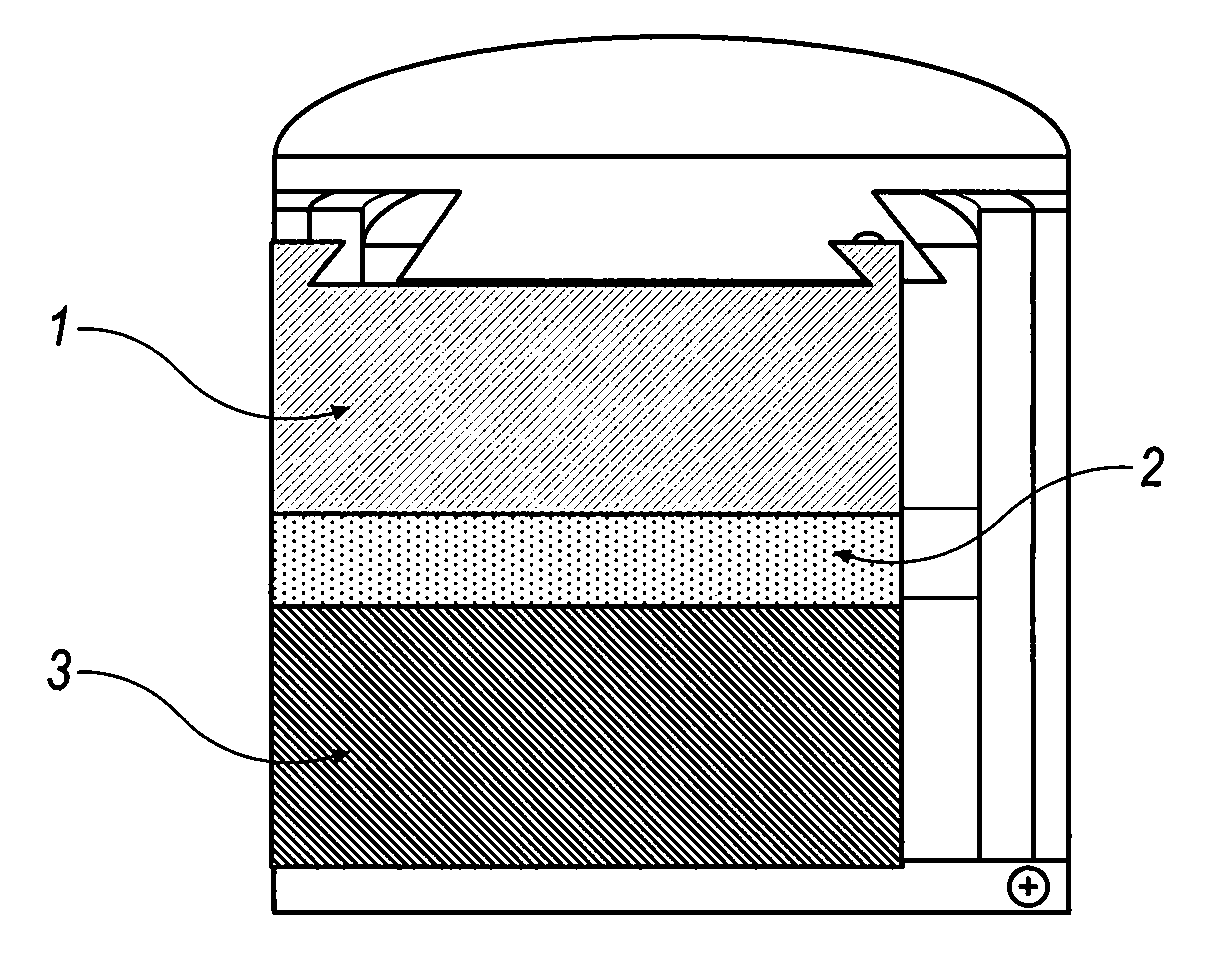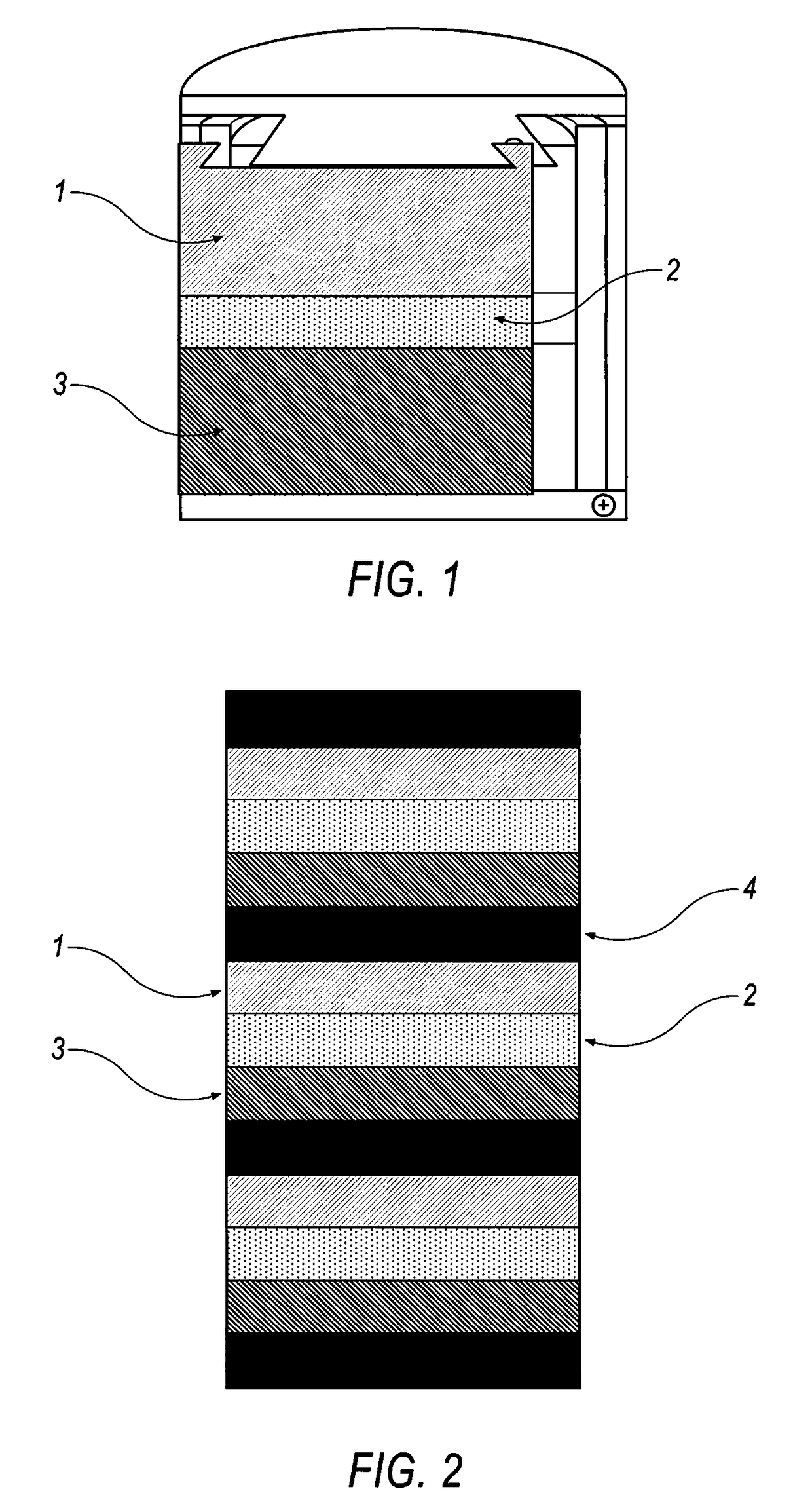Molten metal rechargeable electrochemical cell
a technology of electrochemical cells and molten metals, which is applied in the direction of batteries, cell components, electrochemical generators, etc., can solve the problems of complex and inefficient cell configuration, low chemical reactivity, and ineffective sealing and anti-corrosion measures, so as to reduce the cost, reduce the effect of chemical reactivity and high commercial availability
- Summary
- Abstract
- Description
- Claims
- Application Information
AI Technical Summary
Benefits of technology
Problems solved by technology
Method used
Image
Examples
Embodiment Construction
[0048]The present invention provides an electrochemical cell comprising an anode and a cathode, wherein the anode, the cathode, or both is in a molten state, and an electrolyte salt situated between the electrode materials.
I. Definitions
[0049]As used herein, the term “battery” encompasses electrical storage devices comprising one electrochemical cell or a plurality of electrochemical cells. A “secondary battery” is electrically rechargeable, whereas a “primary battery” is not electrically rechargeable. For secondary batteries of the present invention, a battery cathode is designated as the positive electrode during battery discharge and the negative electrode during battery charging. Accordingly, the anode is designated as the negative electrode during cell discharge, and as the positive electrode during cell charge.
[0050]As used herein, the terms “electrochemical cell” and “cell” are used interchangeably.
[0051]As used herein, the term “molten” refers to a material that has been hea...
PUM
| Property | Measurement | Unit |
|---|---|---|
| melting temperature | aaaaa | aaaaa |
| operating temperature | aaaaa | aaaaa |
| operating temperature | aaaaa | aaaaa |
Abstract
Description
Claims
Application Information
 Login to View More
Login to View More - R&D
- Intellectual Property
- Life Sciences
- Materials
- Tech Scout
- Unparalleled Data Quality
- Higher Quality Content
- 60% Fewer Hallucinations
Browse by: Latest US Patents, China's latest patents, Technical Efficacy Thesaurus, Application Domain, Technology Topic, Popular Technical Reports.
© 2025 PatSnap. All rights reserved.Legal|Privacy policy|Modern Slavery Act Transparency Statement|Sitemap|About US| Contact US: help@patsnap.com



